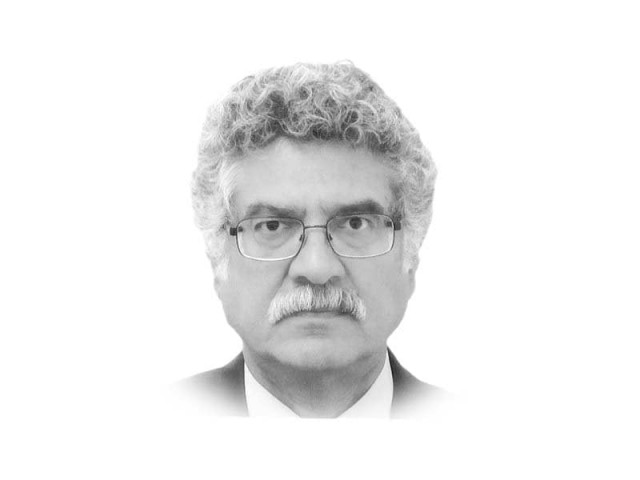The new Cold War
These decisions are justified as examples of Trump’s commitment to avoid costly foreign wars

The writer is a former Ambassador of Pakistan
The present Cold War is significantly different and more dangerous from the last one. Instead of a bipolar US-Soviet confrontation with well-known defence alliances — Nato and the Warsaw Pact — there are now three powers competing for influence with shifting alliances. For now, China and Russia see merit in a strategic partnership against America whereas America’s allies are unsure about Trump’s commitment to their security. There is also no Iron Curtain or Berlin Wall separating the world’s powers into opposing ideological camps. Instead there is a blurring of political, security and economic interests, such as those over China’s BRI or the controversy surrounding Huawei’s 5-G application by US ‘allies’. In short, the global transition from a bipolar world following end of the US-Soviet Cold War in 1990 to an America-dominated unipolar world till 2008, has now evolved into a more complicated and complex multi-polar world order.
There was a brief period following the collapse of the Soviet Union that provided the opportunity for creating a stable international order. But as the sole superpower, the US squandered this opportunity to build mutually-beneficial and cooperative relations with a demoralised Russia and an emerging China. Driven by ‘New-Cons’, the Bush administration pursued unilateralism and preemption, aimed at global domination and regime change. International support for counterterrorism after the 9/11 attacks on the US was misused to invade Afghanistan and then Iraq. Russian security concerns were ignored by expanding Nato to include East European countries along with placement of American missiles. China’s offer for its ‘peaceful rise’ and ‘harmonious relations’ were countered by strengthening military alliances with Japan, Australia, Taiwan and South Korea and creating new ‘strategic partnerships’ India and Vietnam. The Obama administration essentially carried out the same ‘Bush Lite’ policies — regime changes in Libya, Syria, Georgia and Ukraine as well as the ‘Pivot to Asia’, coupled with political and military support to countries that enabled the encirclement of both Russia and China.
It was inevitable that such American ‘Imperial Hubris’ would create a push back by Russia and China. This was facilitated by America’s over-reach and crossing the limits of its power. The Russians reacted by directly intervening in Georgia and Ukraine as well as in Syria. The Chinese responded by building up their defences in the Asia-Pacific, especially in the South China Sea, and by implementing their BRI as a hedge against American maritime containment. Both powers also built up their conventional and strategic forces while entering into a strategic partnership against the US.
Trump’s campaign slogan to ‘make America great again’ implicitly recognised that the US had lost its preeminent global position. Instead of accepting this reality and working with Russia and China to ensure a stable international order, he opted for confrontation. This zero-sum approach is clear from Trump’s National Security Strategy and National Defence Strategy both of which identify China and Russia as enemies and call for ensuring that America “remains the preeminent military power in the world”. Sanctions have been imposed on Russia and a trade war started with China. Meanwhile, American forces confront those of Russia in Europe and the Middle East and the Chinese in the Pacific. A military flare-up between them is inevitable.
This new Cold War already confronts Pakistan with daunting challenges. Bilaterally, Washington has sanctioned Pakistan, withheld its Coalition Support Funds, leveled allegations of supporting terrorism and demanded a freeze on its strategic capabilities with no such demand being made on India. The US also strongly opposes our relations with China, especially implementation of CPEC as part of the BRI since this would neutralise American attempts to contain China. Resultantly, Washington is trying to undermine CPEC through multilateral financial institutions, supporting Indian claims that CPEC passes through ‘disputed territory’ and encouraging opposition to CPEC within Pakistan.
Moreover, the US is enabling India’s conventional and strategic military build-up to counter-balance China. This presents an existential threat to Pakistan. America has also endorsed India’s regional hegemonic ambitions which undermine resolution of Pakistan-India disputes.
In this situation, Pakistan’s options are clearly to seek even greater political, security and economic engagement with China as well as to broaden its relations with Russia. Pakistan also needs to use its leverage with the US such as its logistic and intelligence support for Washington’s Afghan operations and facilitation of the American-Taliban dialogue, to ensure as much damage limitation as possible in relations with the US. But, given the onset of the new Cold War, friendship with the US is not possible in the foreseeable future. Given the unstinted American support for India, there is no possibility either for normalisation of the ties with India. The best we can achieve is conflict prevention. For this, we must ensure continuing credible deterrence in response to the Indian military build-up.
Published in The Express Tribune, July 2nd, 2019.
Like Opinion & Editorial on Facebook, follow @ETOpEd on Twitter to receive all updates on all our daily pieces.
















COMMENTS
Comments are moderated and generally will be posted if they are on-topic and not abusive.
For more information, please see our Comments FAQ